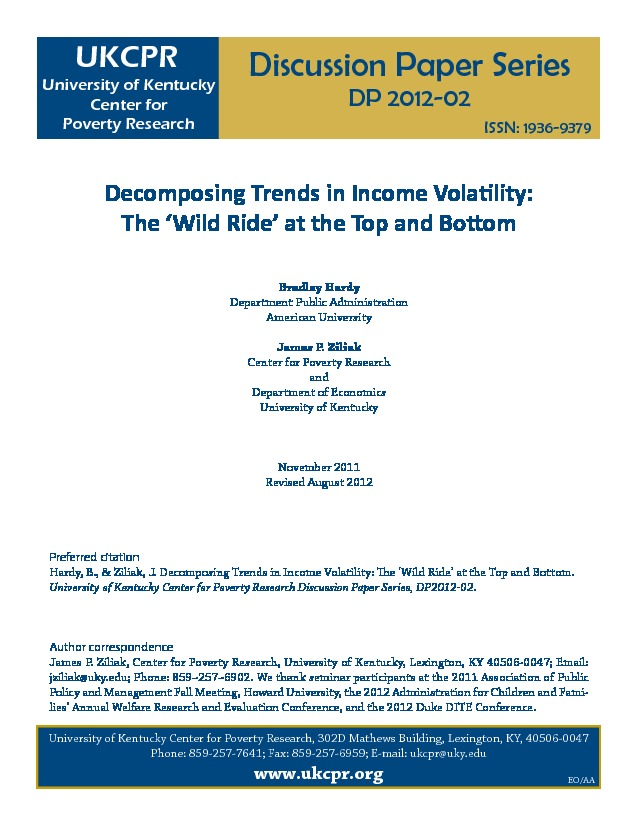We provide a detailed accounting of the trend increase in family income volatility in recent decades by quantifying the contributions of household head earnings, spouse earnings, non-transfer non-labor income, transfer income, and tax payments (inclusive of the refundable Earned Income Tax Credit), along with covariances among the income components. Using twoyear matched panels in the Current Population Survey from 1980 to 2009, we find that the volatility of family income, as measured by the variance of the arc percent change, doubled over the past three decades. The increase in volatility was most pronounced among the top 1% of the income distribution; however, in any given year the level of volatility among the bottom 10% exceeds that of the top. The variance decompositions indicate that increased family income volatility comes directly from the higher volatility of head and spouse earnings, and other non-labor income, as well as from substantially reduced covariance between these three income sources with the tax system. This suggests that the current tax code is less effective in mitigating income shocks than in previous decades. Among lower income households, a larger share of volatility is driven by transfer income. In the absence of the increased negative covariance between the volatility of head earnings with non-transfer other income, overall volatility would be much higher.
Research
InequalityPDF Thumbnail
